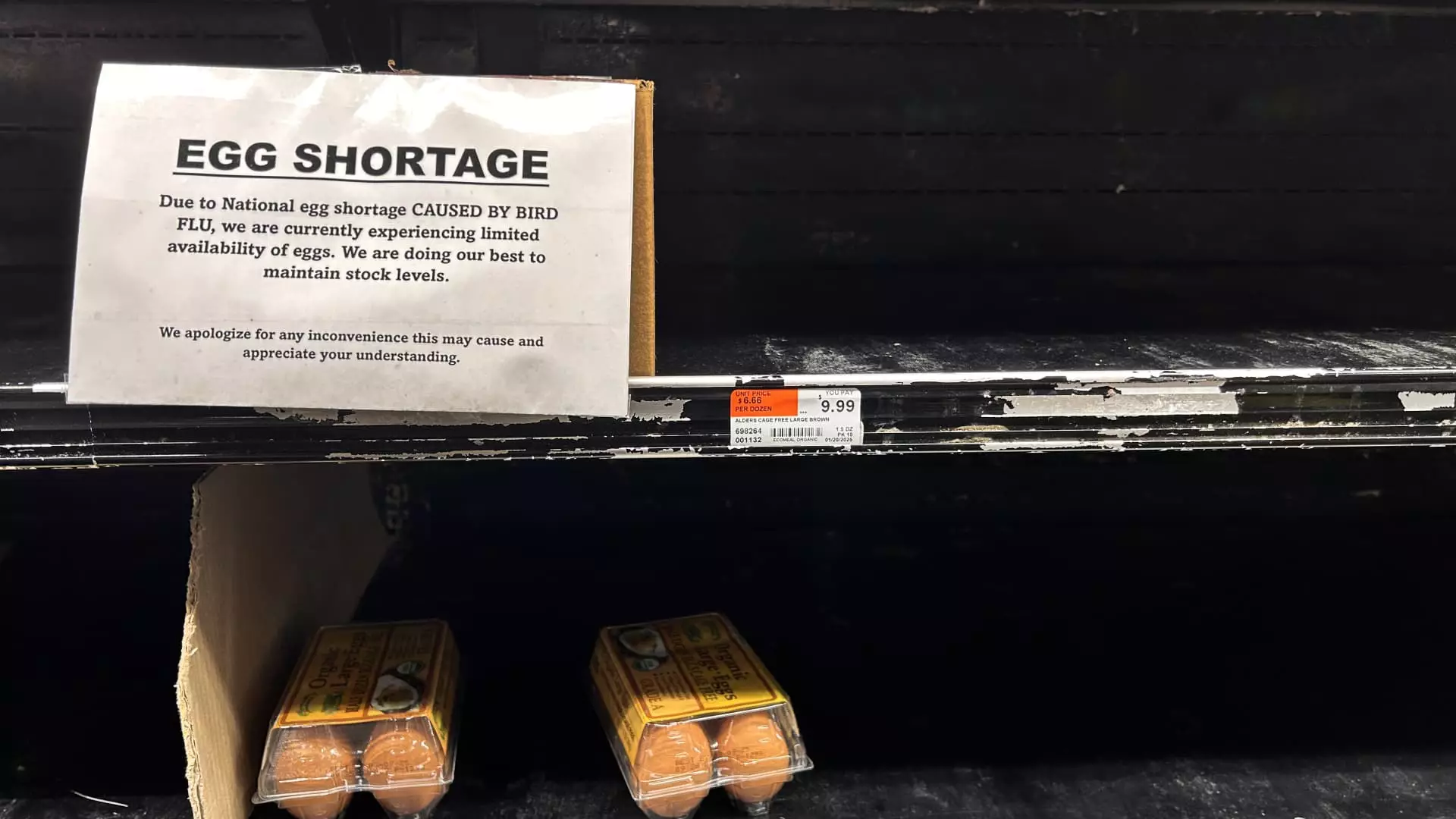The recent surging wholesale prices of eggs have caught the attention of consumers and experts alike, signifying disastrous consequences stemming from ongoing bird flu outbreaks across the United States. With average wholesale prices for large, white shell eggs skyrocketing to approximately $8 per dozen—surpassing previous highs—many anticipate that shoppers will inevitably face higher prices in grocery stores. As inflation rates ease for many other products, egg prices remain a stark anomaly, stirring worries among consumers regarding their grocery bills.
According to data from Expana, a leading agricultural commodity price tracker, the previous record for wholesale egg prices stood at $5.46 per dozen in late December 2022. Comparatively, the leap to $8 marks a staggering increase, indicating the pressing impacts of supply shortages due to avian influenza. Market analyst Ryan Hojnowski explains that despite the pains of rising wholesale prices, there exists a brief lag before these rates reflect on retail shelves, meaning the worst is yet to come for consumers accustomed to lower prices.
As inflation moderates in other sectors, the shock of escalating egg prices presents a unique challenge. Reports indicate that major retailers like Trader Joe’s and Costco have introduced purchasing limits on eggs to manage their inventories, while restaurants such as Waffle House have added surcharges to egg dishes, demonstrating the far-reaching implications of escalating prices on both consumers and businesses.
At the heart of the current egg price crisis lies the highly pathogenic avian influenza (HPAI), which has wreaked havoc on poultry populations across the country. Experts point out that the disease is lethal among bird populations, leading farmers to cull entire flocks upon detection of the virus. Amy Smith, vice president of Advanced Economic Solutions, highlights that over 40 million egg-laying chickens perished in 2024, representing about 13% of the total U.S. egg-laying population. This substantial loss has catalyzed a significant decline in egg inventories—currently about 15% to 16% below the five-year average.
The fourth quarter of 2024 alone saw the demise of approximately 22 million egg-laying chickens. This creates a dire supply imbalance coinciding with peak seasonal demands, as households ramp up egg purchases for holiday baking and cooking. The result has been a shocking escalation in wholesale prices, which have reportedly tripled or even quadrupled from previous year levels, a situation described as “very significant” by Smith.
The transmission of these wholesale price increases to retail consumers, however, may not unfold uniformly across different retailers. Large national chains like Walmart and Aldi typically possess greater capacity to mitigate price surge impacts due to possible economies of scale or fixed-price contracts for egg supplies. They often can navigate such crises more adeptly, using their diversified product lines to balance overall pricing.
Conversely, smaller, independent retailers may lack these advantages, leading to more immediate price adjustments in alignment with rising wholesale costs. Such strategies may be necessary as they strive to maintain profitability, with the risk that consumers might turn away from local shops due to higher prices.
The drastic rise in egg prices is made more alarming when placed next to other poultry products. While the average retail price of eggs has surged approximately 170% from December 2019 to December 2024, the prices for chicken meat have risen only modestly—42% for whole chickens and 32% for boneless breasts during the same period. This disparity accentuates the disproportionate effect of bird flu on egg-laying hens compared to broiler chickens, which are primarily raised for meat.
Experts underscore how the current crisis is not merely a reflection of inflation—but a direct consequence of systemic poultry health issues. Indeed, while the chicken market has experienced price fluctuations, it is evident that the egg sector has paid a significantly steeper price in consumer costs. As the U.S. continues to grapple with HPAI’s ramifications, the unpredictability of future egg prices remains a concern for both consumers and retailers alike, leading to a consumer landscape marked by uncertainty and unexpected financial burdens.
The egg price crisis, driven by bird flu outbreaks and exacerbated by market dynamics, presents challenges that extend beyond simple inflation statistics. Each facet of this issue—from production losses to retail pricing strategies—underscores an urgent need for strategies to bolster poultry health and stabilize egg supply chains in the future.

